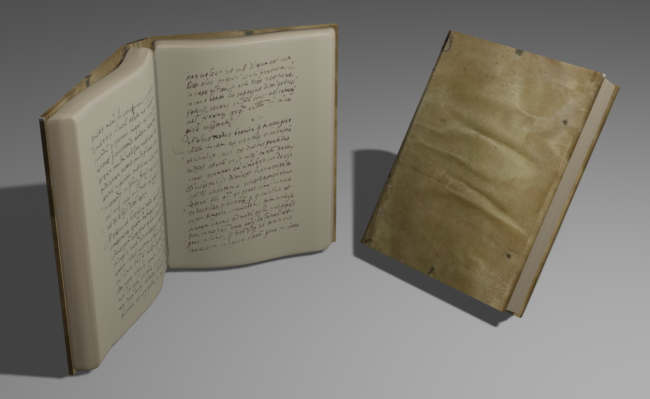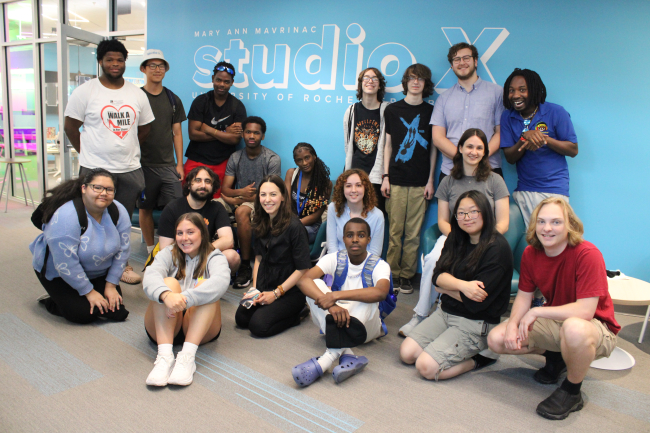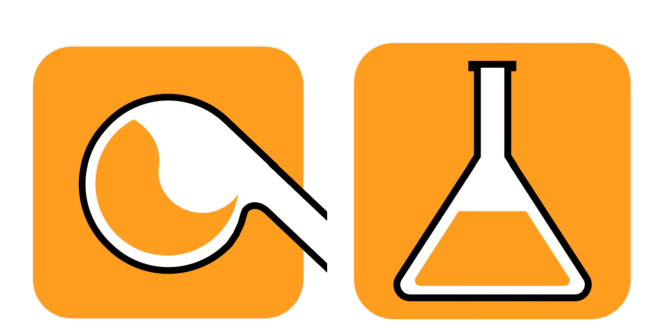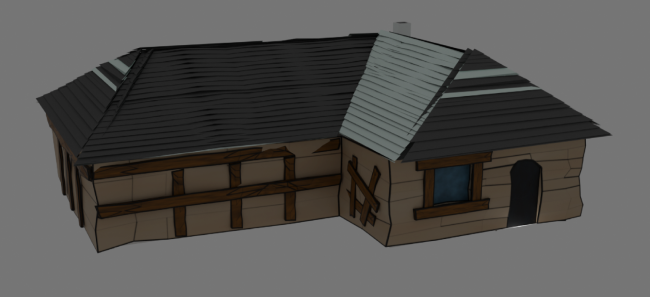
With this entry, I’m wrapping up my third summer in a row working at the library! All of them have been spent working primarily on Aurum VR, an interdisciplinary project between Studio X and the Robbins Library, where we use primary texts from the Robbins's collection to recreate an alchemical lab in virtual reality. My summers before this were primarily focused on doing historical research and fact-checking, as well as working on planning out the game’s plot elements and characters. This was my first summer as Aurum’s project manager since I took the position last September, as well as my first summer working in Studio X.
Working on Aurum and setting us up for a new semester of work was a primary goal of mine this summer, but first came our pre-college program, Dreaming New Realities. High school students from around the country came in for two weeks to build their own VR experiences, ranging from football and basketball simulators to art heists. To prepare, I went through crash courses on Blender and Unity — the 3D modeling software and game engines we also use to develop Aurum. I was responsible for teaching our introductory Blender workshop, and taught a dry run workshop to library staff before running it for the students.
For me, pre-college was a great opportunity to become better acquainted with my team. This was my first time working with some new employees in Studio X, and I got to see them put their strengths to work. Emmie Lin, a new XR Specialist, knew Blender inside and out, and I watched her overhaul large sections of our 3D modeling instruction to allow students more freedom in their 3D modeling. Fenway Powers, also a new XR Specialist, approached Unity with enthusiasm and modified parts of our existing project framework to make the experience more accessible for the students. Libby Braun, our Studio X pre-college summer intern, ran team check-ins every day where we were encouraged to think about what went well and what we could improve moving forward. Overall, we were very much in an improving-and-supporting headspace where I got to see the team gel and make note of ways we could use their strengths to both support their interests and support the project itself.

After saying goodbye to our 10 students, it was back to Aurum with a new perspective on our team’s structure and strengths. I met with Emmie and Miles Vilke, the Coding Lead for Aurum, to discuss our style guide, because Emmie had identified a way to standardize our texturing practices that would make the game look more visually cohesive while also requiring less processing power from the headset. Libby used Asana, a task management software, to organize our workflow during pre-college, and it worked so well that I migrated our Aurum tasks from Notion to Asana for workflow management in the fall. I was even able to spend some time on a little bit of a passion project: learning Adobe Illustrator, where I tinkered with some potential logo designs for the game.

It’s really rewarding to have worked on this project for so long and to see how far it’s come: when I first joined in June of 2022, we had no recipes, just some flasks and a furnace in a tower. Over the past two years, we built a fresh new lab space, created a style guide for the remainder of the project, implemented two new recipes, implemented a recipe book, and began building the backstory for the player character and the in-game world. We’ve demoed the game four times: twice at the Frameless Symposium at RIT in November of 2022 and 2023, and twice at Studio X showcases in May of 2023 and 2024.
This fall, I’ll be diving even deeper into the project as Studio X’s Karp Library Fellow in Narrative Design. I’ll still head the project, while also researching ways to best utilize VR to tell our alchemist’s story. We have a lot of stuff planned: adding a UI/UX taskforce to our team, migrating management platforms, and introducing changes to our work schedule & budget to allow XR Specialists dedicated time to focus on Aurum. Contingent on the success of this new plan, we hope to add a functional UI system to the game by winter and clean up our visuals, making the game a bit more fun to play around with and encourage a little more freedom within the alchemy lab.

Credit and caption for first image: Our 3D model of a 17th-century alchemical manuscript from Robbins, for use in-game. (Modeling credit: Josh Jones)
About this Author
Elizabeth Hogrefe, XR Specialist


